Description
Version 2 of Mini Ultra Pro. When we release the first revision of the Mini Ultra Pro, we received some awesome suggestions from our awesome customers. We took the suggestions seriously and incorporate them in this new version of the board!
This is our low power rendition of the Arduino Zero! We hit the limit (program flash, memory) on a custom board based on our beloved Mini Ultra 8 MHz board while doing a custom project for a client. As much as we want to make an ATMega2560 version of the Mini Ultra, the chip size (TQFP100) is just awfully too big for our liking and the price is unreasonable for an 8-bit microcontroller. In contrast, the 32-bit ARM Cortex M0+ ATSAMD21G18A provides plenty of processing power and peripherals at a reasonable cost. For the past 10 years, we have been actively involved in wireless sensor network and Mini Ultra Pro is the result of those hours and hours of developing what works in the field. The Mini Ultra Pro works great with our updated Arduino compatible low power library to allow flexible low power management of the board. This version comes WITH the radio transceiver module and SMA or u.FL assembled. Specifications:
- Compatible with Arduino IDE using “Arduino/Genuino Zero (Native USB Port)” as the board option
- Microcontroller – ATSAMD21G18A-AU
- Clock – 48 MHz
- Operating voltage – 3.3 V
- Low quiescent current (1.6 μA) on-board 3.3 V 250 mA low dropout regulator
- Ultra low power – Minimum 20.0 μA in sleep mode (known as standby mode on ATSAMD21G18A-AU) with a 4.2 V Li-Ion/Li-Pol battery as power source
- External DC source range – 5 – 10.5 V (over voltage protection up to 28 V):
- Optimized for 6V 3W solar panel
- Battery charging management:
- Power path management for proper charging process and load balancing
- 400 mA battery charging current
- 2 indicator LED for power good and charging process indication
- Suitable for battery operation (3.6 V Lithium-Ion/Polymer)
- Radio transceiver module options:
- RFM95W 20 dBm long range LoRa radio module (915MHz or 868MHz):
- Tested range with our 5 dBi antenna in semi urban area of 8 km (SF = 12, BW = 125 kHz, power = 20 dBm, frequency = 915MHz)
- Jumpers available to connect DIO1, DIO2 & RESET on RFM95W to ATSAMD21G18A-AU. This allows the board to run the Arduino-LMIC library in order to operate in a LoRaWAN network such as the The Things Network (TTN)
- RFM69HCW 20 dBm FSK radio module (915MHz or 868MHz):
- Tested range with our 5 dBi antenna in semi urban area of 1 km
- Option to run the multi platform RadioHead Packet Radio library for embedded microprocessors
- RFM95W 20 dBm long range LoRa radio module (915MHz or 868MHz):
- On-board 2 MB (16 Mbit) serial flash for data logging:
- SerialFlash library by Paul Stoffregen is highly recommended to access the on-board serial flash
- 2 options of antenna connector:
- SMA
- u.FL – can be removed easily with a soldering iron to use a 1/4 wave wire antenna solder to a pad hole provided on the board
- On-chip RTC with calendar support (using the RTCZero library)
- On-board 64-bit (8-byte) unique global identifier MAC address provided by the 24AA02E64 chip:
- Can be used as DevEUI in LoRaWAN network
- Indicator LED connected to digital pin 13 through a MOSFET
- 500 mA fuse for USB port over current protection
- USB micro connector with 4 through hole pegs for reliability
- JST PH 2.0 mm battery connector for Li-Ion/Li-Pol batteries
- Side reset tact switch for easy access
- Native USB serial for code upload
- 10-pin 1.27 mm pitch for ARM Cortex SWD (SMD mounted on the board)
- 900 mil in between 2 breakout headers – suitable for breadboard usage
- Dimension – 25.4 mm x 55.88 mm (1.0″ x 2.2″) (without the SMA connector)
- RoHS compliant – Yes
- Comes with a free 2.54 mm 1×40 pin header
- Antenna not included
- FR4 TG150 PCB with ENIG surface finish
Documentation:

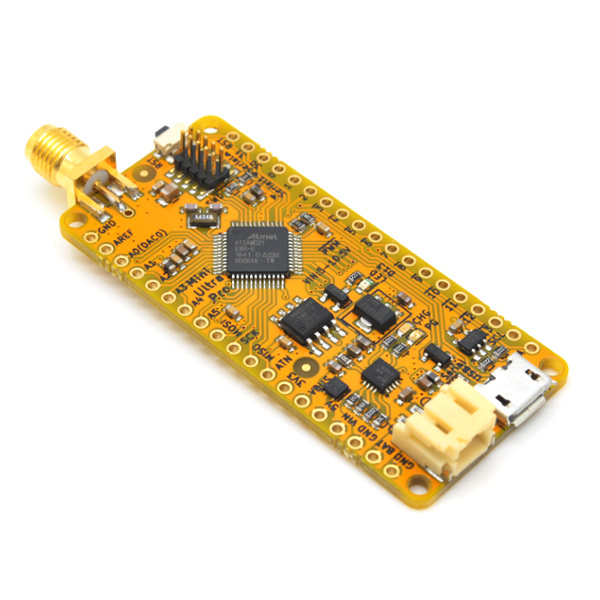
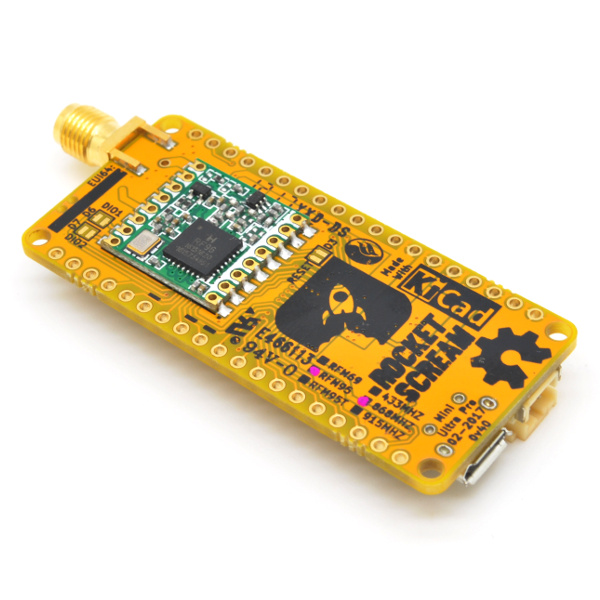
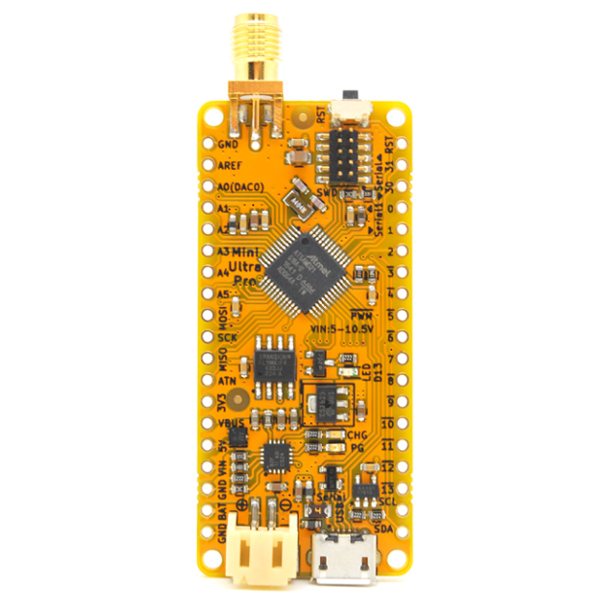

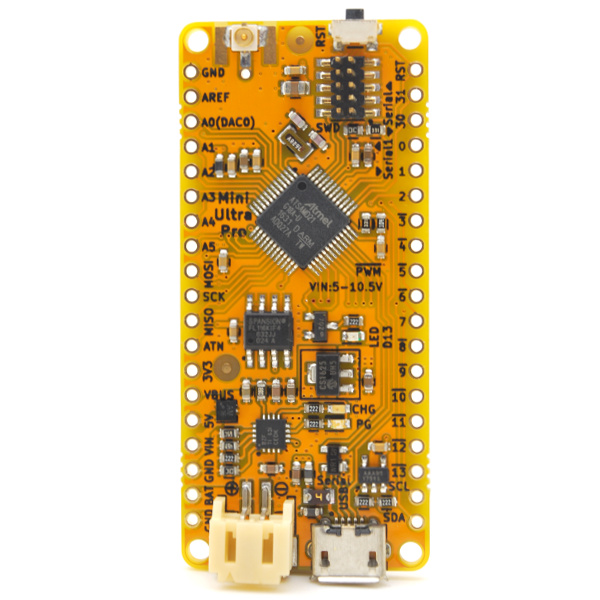
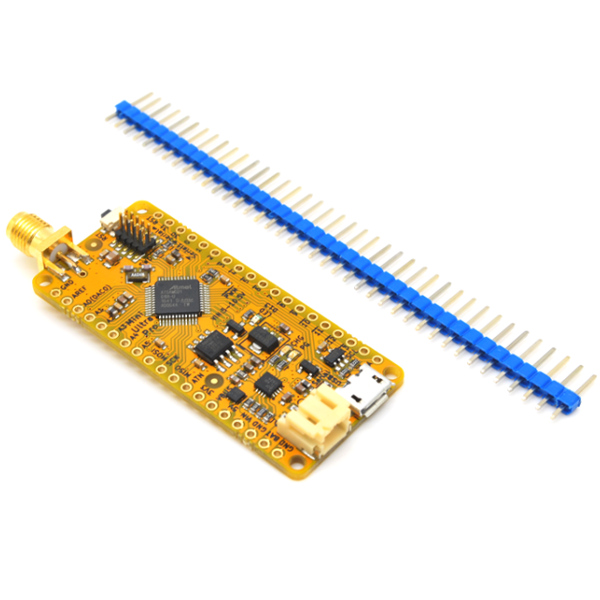

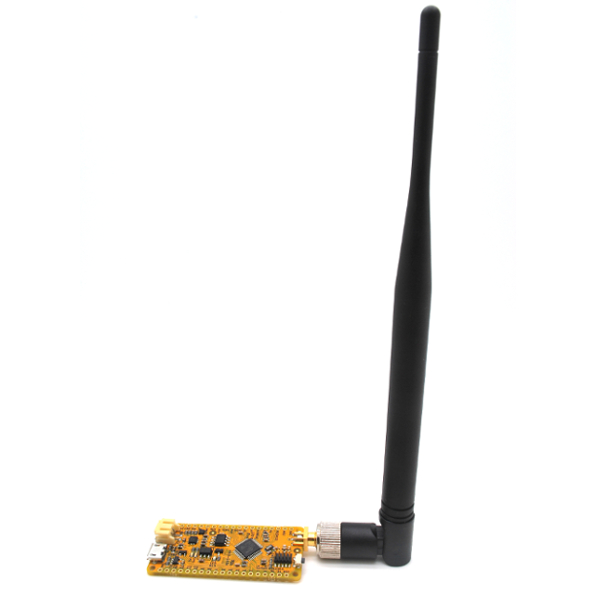
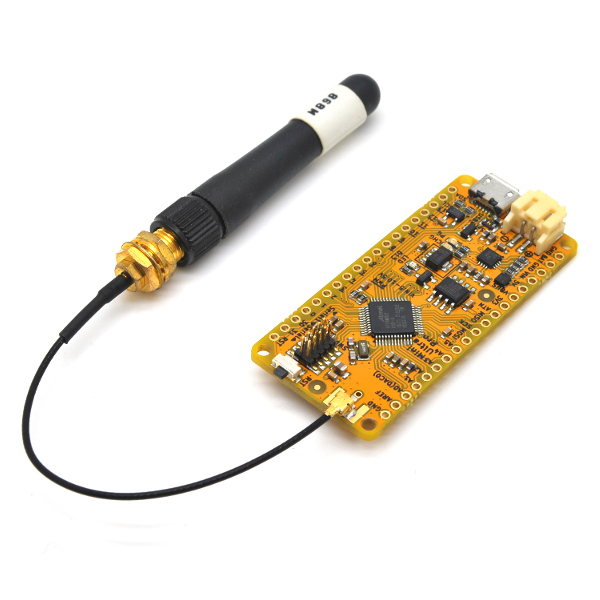
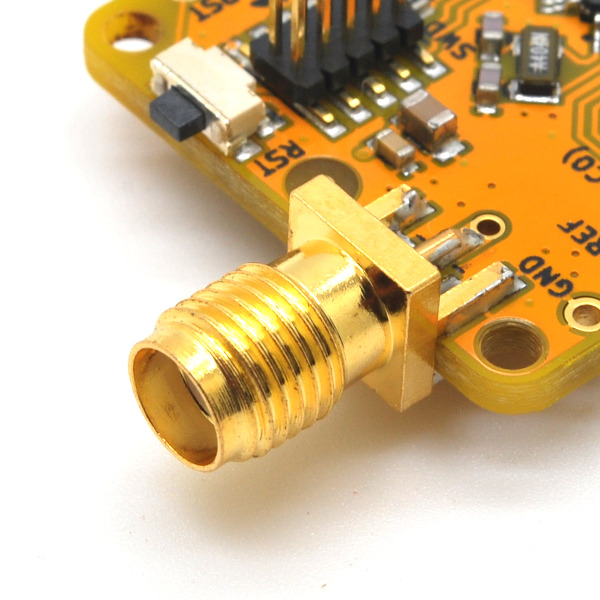

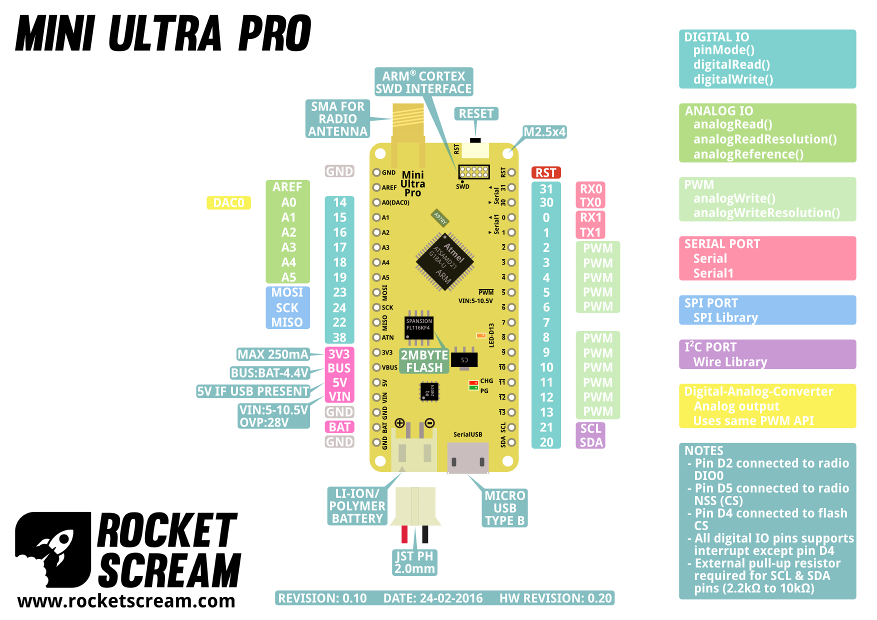
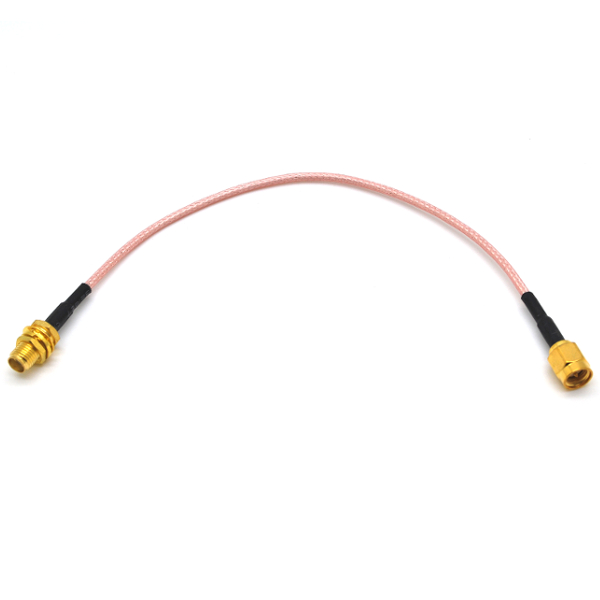
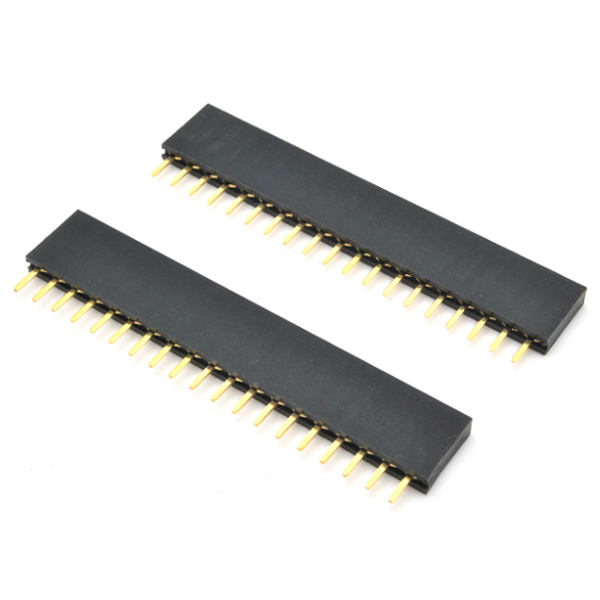
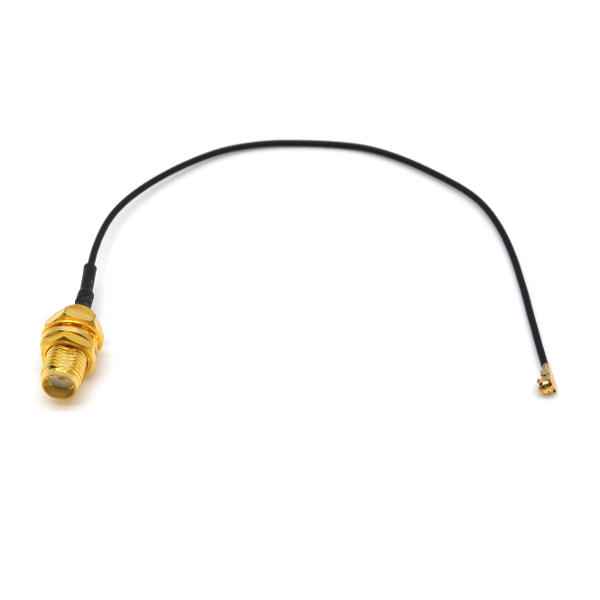
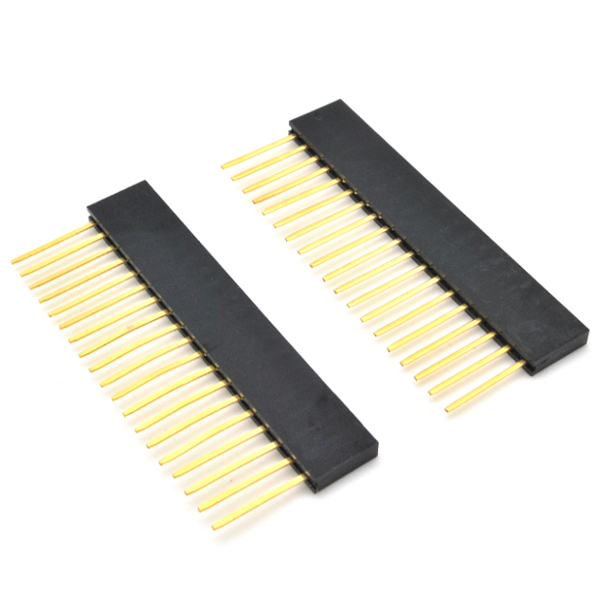


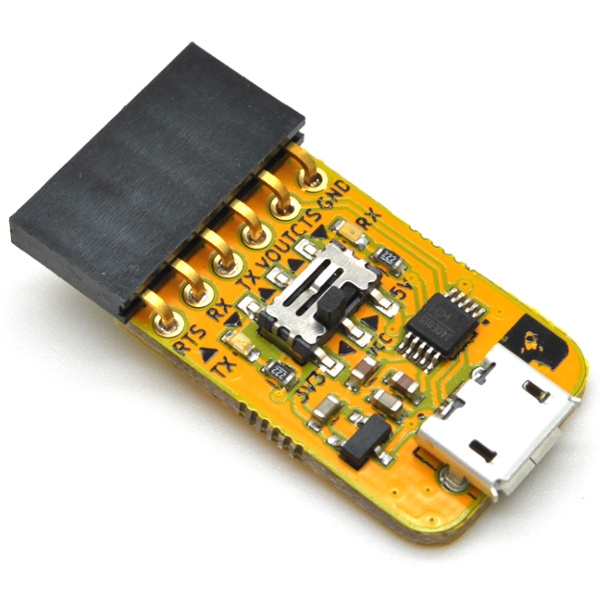
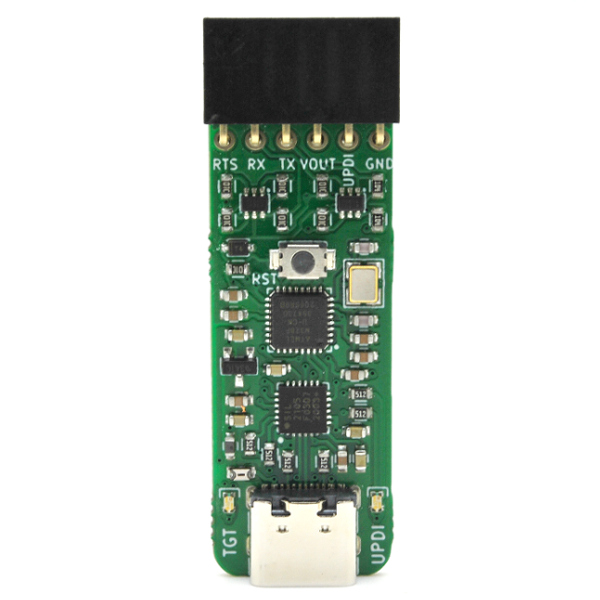







Reviews
There are no reviews yet.